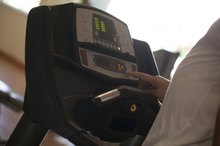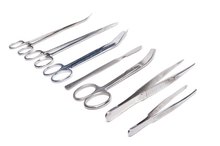A bone spur, or exostosis, is an abnormal growth on a bone. It is sometimes referred to as “hyperostosis.”
If you are experiencing serious medical symptoms, seek emergency treatment immediately.
The Current Procedural Terminology (CPT) code for removal of a bone spur will depend on the location of the spur and whether it is done as a single procedure or in conjunction with another procedure.
Reviewing Documentation for CPT Code Assignment
Coding professionals should review the patient health record to determine correct CPT coding assignment.
For a procedure such as a bone spur removal, start with the operative report to gain a better understanding of the treatment provided to the patient.
Assigning CPT Codes for Bone Spur Removal
Urgent Care Billing Guidelines
Learn More
Within CPT, there is not one generic code that covers all bone spur removals 1. Therefore, it is especially important to note the location of the removal, because the CPT code will be assigned based on location.
To assign the accurate code for bone spur removal, look up the body part affected by the spur in the CPT code book index.
For example, a “pump bump” is a common heel spur often caused by rubbing on the heel in women who wear high-heeled shoes. If a patient is being seen for removal of a heel spur, look first under the term “Heel Spur.” The indentation under “heel spur” in the index provides for “excision, 28119.”
Upon further review of the code, the description for code 28119 is “Ostectomy, calcaneus; for spur, with or without plantar fascial release.”
Follow the same type of thought process for bone spurs in other parts of the body.
CPT terminology uses synonyms for removal, such as excision and repair. If you cannot locate the codes you need in the coding book index, try a synonym. For bone removal, try ostectomy.
- Within CPT, there is not one generic code that covers all bone spur removals 1.
- To assign the accurate code for bone spur removal, look up the body part affected by the spur in the CPT code book index.
Bone Spur Removal in Conjunction With Other Procedures
CPT codes for certain procedures may include a bone spur removal, and therefore, cannot be coded separately.
For example, the CPT code for bunionectomy on the toe (code “28108: Excision or curettage of bone cyst or benign tumor, phalanges of the foot”) includes the procedure of a simple bone spur removal. Therefore, an additional code for the bone spur removal should not be assigned.
Read the code descriptions carefully for these inclusions. Coding additional codes – or breaking procedures into separate codes when it could be covered under one code – is often considered an unethical practice, because it is viewed as trying to obtain more money for a procedure. These claims are denied, and reimbursement is not made for the procedure.
- CPT codes for certain procedures may include a bone spur removal, and therefore, cannot be coded separately.
Related Articles
References
- “CPT 2008-Standard Edition;” Michael Beebe, et. al.; 2008.
- "Mosby's Medical, Nursing & Allied Health Dictionary, Sixth Edition;" Douglas Anderson, Chief Lexicographer; 2002
- Cleveland Clinic. Bone spurs. Updated October 9, 2017.
- Cleveland Clinic. Bone spurs: Management and treatment. Updated October 9, 2017.
Writer Bio
Jacqueline Wilson has more than 13 years of writing and editing experience both in print and online. She has a specialized certification in health-care and is published in the medical academic arena. Wilson has extensive experience in education, marketing and sales. She also teaches college courses on a variety of topics. Wilson received her Bachelor of Science from the Indiana University School of Medicine.









